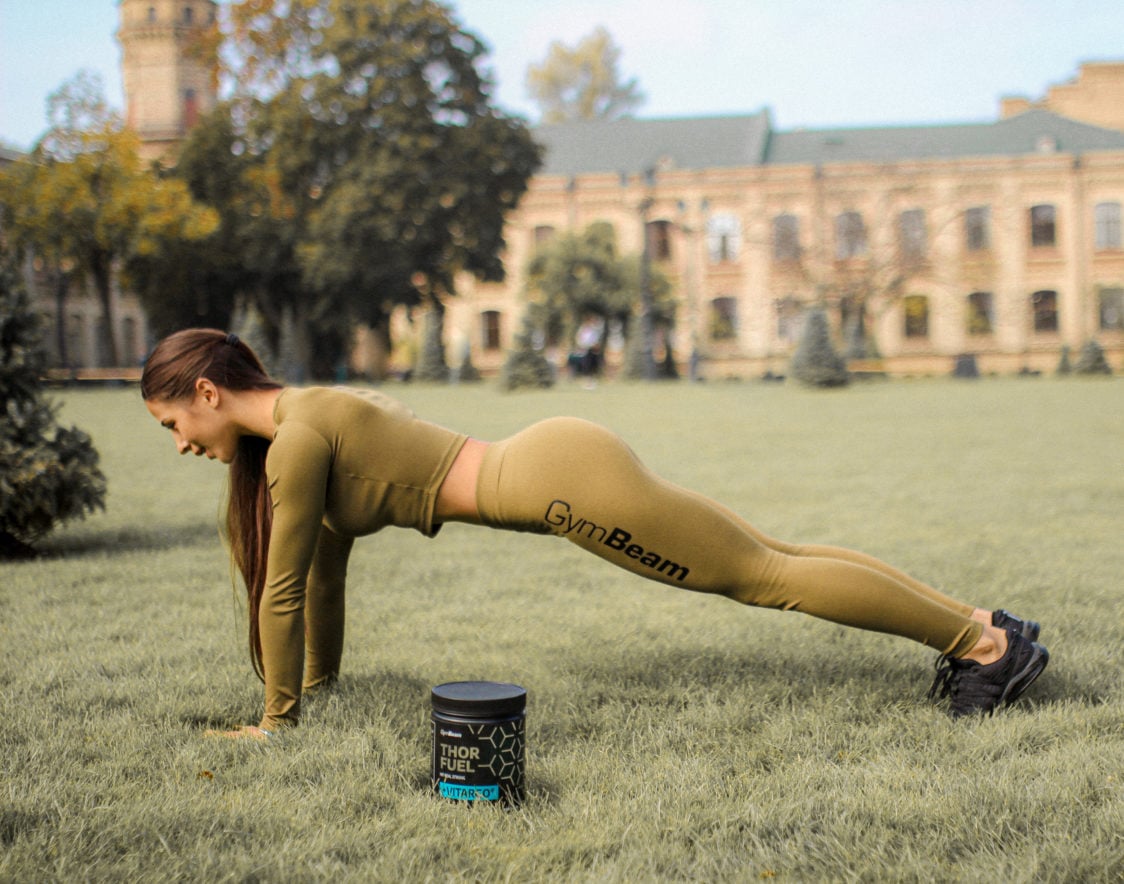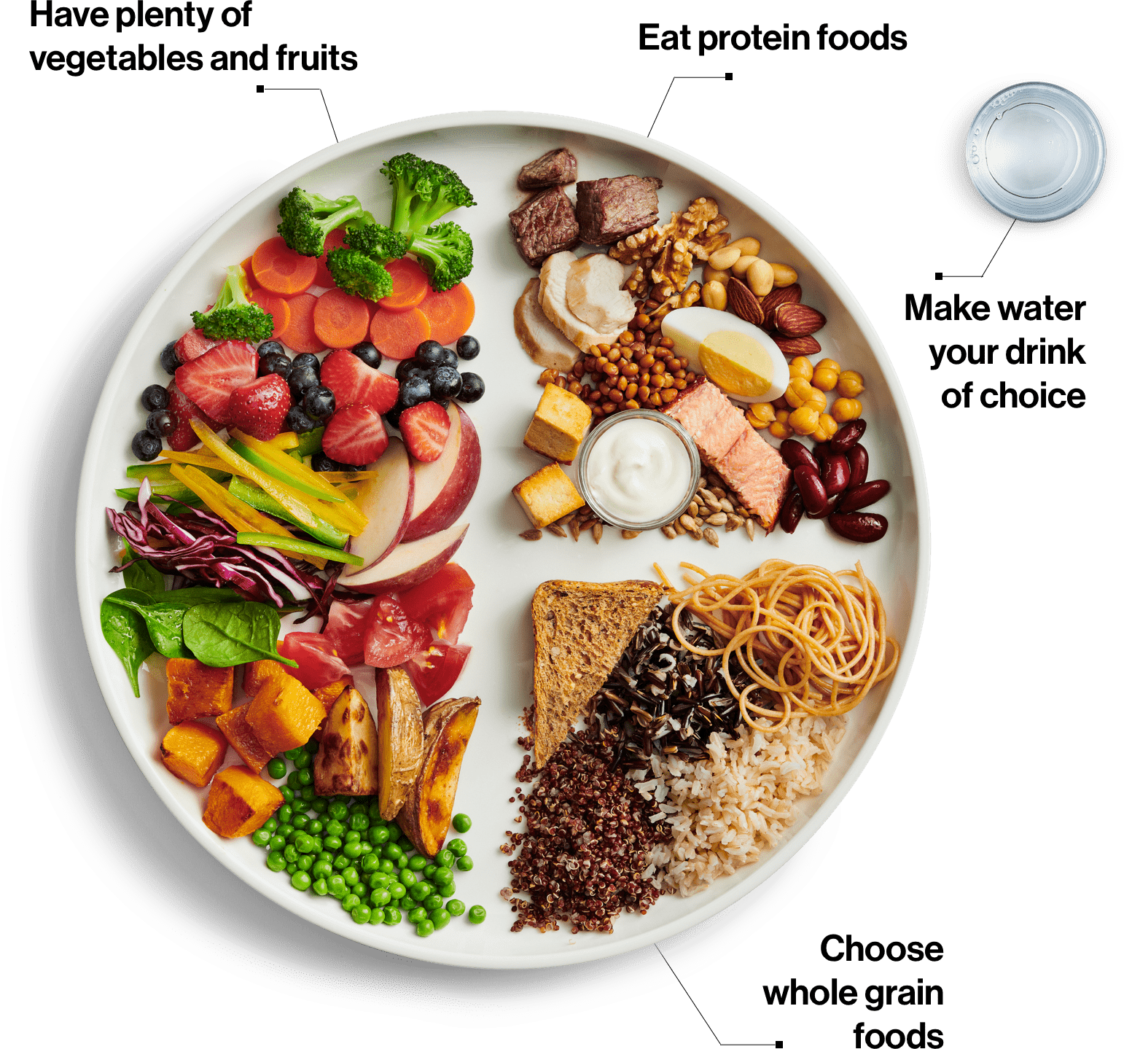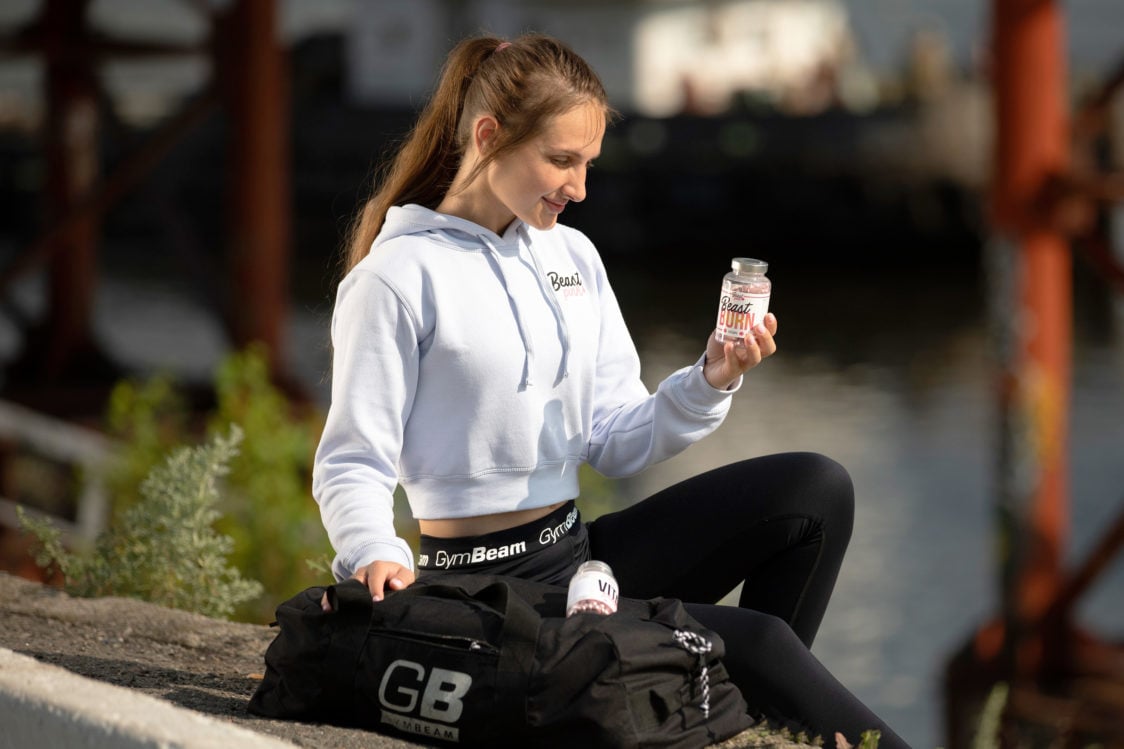Table of Contents
Perfectly chiselled abs as we know it from the covers of Muscle and Fitness magazine are a symbol of great physical condition and perfect appearance for many people. No wonder almost every person desires visible muscles on their abdomen and is often willing to do almost anything for it. It is important to keep in mind that fitness and bodybuilding competitors, whom we look up to for perfect form, are undergoing months of hard work in the gym and in the kitchen. A perfect form with a very low percentage of fat is typically maintained only for the duration of the competition. They know that in the long run, demanding workouts combined with a strict diet could harm their health.
Then are celebrities whose abs are admired around the world, such as models, specifically Victoria’s Secret angels. What connects them to bodybuilders? A low percentage of fat in the body, thanks to which the muscles are beautifully visible. Strict diets also play a big role for models which I certainly wouldn’t recommend you follow. Instead, in this article you will learn effective tips on how to successfully lose belly fat with the help of nutrition, training, quality sleep and other lifestyle factors. You can then gradually apply them in your daily life and take one step at a time to reach beautiful, firm abs.

How to lose belly fat? Just make gradual changes in your life and the results will surprise you
There’s no need to jumpstart your whole life from one day to the next just because you want a slimmer belly. Focus on small changes, develop new habits and persist with them. It takes time and patience, but the results will surely come.
1. Fat loss cannot be targeted to specific body parts such as abs, thighs or buttocks alone
You’re not a robot in a human body that can be programmed to have slender thighs, hips, waist or a bulky chest, unless you want to spend millions on plastic surgery or abdominal liposuction, which isn’t effective in the long run anyway. We can thank our parents for our appearance in such a large part because it is from them that we inherit genetic information. For some, it’s a lottery win, and for a great figure, they almost don’t have to do a thing. We all know that person who just walks by the gym and has abs that everyone else has been working on for months or years.
Does this mean that it doesn’t matter if you spend your days lazing on the couch or are active? Definitely not. Fortunately, you can influence a lot of things with your lifestyle. It doesn’t matter if your goal is a slimmer belly, tight thighs or toned arms. You always need to reduce your body fat percentage overall – that is, lose weight. As you lose weight, the fat starts to disappear comprehensively from your entire body, and it’s hard to check for yourself whether it’s from your stomach, thighs or buttocks first. It’s a little different for everyone. Someone loses weight right away, and in others, stomach is a body part that keeps excess fat right until the end of weight loss. [1]
If you’re wondering why abs exercises themselves aren’t effective, read our article Sit – Ups and Crunches: Why Don’t They Help You Lose Abdominal Weight?

2. Set real and manageable training and diet goals
To add “a six-pack by summer” to your goals list is ambitious, but you better be realistic. Focus your attention on the process that will eventually lead you to your dream destination. Start by writing down specific goals and steps to help you achieve your dream abs. What might that look like? As part of my training, I will train Monday, Wednesday and Saturday with strength exercises, I will go for a 30-minute jog on Tuesday and Friday. Instead of sugary drinks, I’ll just drink clean water and replace chips with crunchy vegetables. It’s up to you how you will incorporate this into your life.
I understand that the motivation is great in the beginning, but try not to burn through it right away and go slow. There’s no point in turning your life around 180 degrees and finding out in a week or two or a month that you can’t go on like this. Fulfilling the training schedule of any top athlete with a strict diet is not easy in real life for ordinary people. Focus on small changes that you gradually incorporate into your daily life. In time, this will become a big change that will lead you to your goals. It’s not supposed to be hard work, just enjoy it!
In case you are interested in more information about goal planning and maintaining your motivation not only for exercise, read our article 5 Tips To Staying Active, Motivated and Continue Exercising At Home.
3. Improve your diet and develop a healthy diet plan to lose weight
Take a look at your current diet and think about whether you are eating sufficient amounts of protein, fruit, vegetables and fibre. Do you often have unnecessary calorie bombs in your diet? For at least five days, write down everything you’ve eaten and drunk.
Take a look at your diet record and assess whether you’re making these mistakes that are holding back your progression:

- You eat little protein or choose inappropriate sources
Proteins are talked about much more in the sports world than any other nutrients. They are important for the protection and growth of muscle mass and can also help with weight loss.
As a rule, more protein in the diet means:
- overall lower energy intake for the whole day – protein will make you feel more and more satiated after eating,
- a decreased appetite – you won’t feel like eating something extra as often,
- protection of muscle mass from burning of energy during weight loss,
- a higher loss of fat during weight reduction
- greater energy output for food digestion – proteins have a higher thermal effect on digestion compared to carbohydrates and fats. This means that, for example, out of the 100 kcal taken from protein, your body actually uses 70-80 kcal depending on the type of protein. [2-3]
For most active people, it is sufficient if their protein intake in grams is roughly 1.4 – 2 times greater than their body weight. [4]
Where to look for protein and how to have enough in your diet? Have protein in every meal and choose especially quality sources. These include, for example: meat (lean meat – chicken, turkey breast, beef hind), fish (tuna, sardines, salmon), eggs, protein.
These can be interchanged with plant protein sources – tofu, tempeh, chickpeas, lentils, plant proteins.
If you are wondering how protein deficiency can manifest, read our article 5 Warning Signs You Are Not Getting Enough Protein.
- You are eating too many sweet or salty treats
Sweet and salty snacks contain high amounts of simple sugars, fats, salt and calories even in small amounts. At the same time, they are low in protein and fibre in most cases. They don’t fill you up that much, and it’s possible that after eating one piece, you might just bite into another.
Overall, this can lead to excessive energy intake, weight gain or unsuccessful weight loss. Try reducing these types of foods, or at least replacing them with healthier alternatives that have more protein, fibre and less fat. Try protein bars, chips or chocolate.
In case you’re dominated by sweet cravings and can’t handle them, read our article 15 Steps To Get Rid Of Sweet Cravings.
You might be interested in these products:
- You drink your calories
One litre of orange juice contains approximately 460 calories and 1 litre of beer contains up to 500 calories. In comparison, a litre of tap water has 0 calories. It is definitely worth drinking water! Flavoured drinks or alcohol can easily increase your daily energy intake, which can determine whether you lose weight, gain weight or maintain weight. Moreover, after beer there are often cravings for salty foods. In an evening, it can result in a good few hundred extra calories. Ideally, try switching to unsweetened beverages (water, tea), or at least replacing them with no-calorie options that use sweeteners instead of sugar. If you don’t like fresh water, try refreshing it with fresh mint, lemon or even BCAA amino acids. [5-6]
- You eat little fibre
Do you eat few vegetables, fruits, legumes, wholemeal bread or oatmeal? So it’s possible you’re low on fibre. It promotes healthy digestion and increases the feeling of satiety after a meal. A higher fibre intake will make you feel pleasantly satiated, even if you have taken in fewer calories than usual. This may make it easier to lose weight. Increase the amount in your diet gradually. Try to eat 400g or 5 portions of vegetables and fruit each day, have legumes several times a week (hummus, soup, legume pasta), try oatmeal or muesli with yoghurt for breakfast and choose mainly whole grain baked goods and side dishes (quinoa, rice natural). [7]

- You often eat in restaurants or order food delivery
Some restaurant meals would probably pass the healthy eating test, but even so, eating out is risky in terms of weight loss. You don’t have to eat the largest fast food order to complicate your path to coveted abs. An innocent vegetable salad with a hearty portion of oil or mayonnaise dressing is more than enough.
Also, regular menu in restaurants can in some cases be a hot calorie bomb that shakes up your energy intake. It is not necessary to give up restaurant meals immediately, but try to think more about choosing a suitable dish or ideally prepare meals at home and freeze them. This will give you control over the quantity and type of ingredients used.
When eating, remember that it is not good to overeat, even if you have a carefully prepared healthy meal. For better portion size control, try using a smaller plate and eat slowly. You should feel about 80% satiated after eating.
Control portion sizes of protein, carbohydrates and fats, and become get by a healthy plate

4. Set your energy intake for weight loss
If you have already managed to make some adjustments according to the previous point, it is likely that you have reduced your energy intake and you do not even know it. This always decides whether you will be successful at losing weight or not. Your current energy intake is the calories you take from your diet, beverages and nutritional supplements. In case you want to lose weight, it should be lower than your energy output, which includes basal metabolism, daytime exercise, sporting activities and the thermal effect of food. As a result, it is necessary to get into a calorie (energy) deficit, which is crucial for reducing fat.
You don’t have to stress over hard maths. How many calories you should eat to achieve an energy deficit can be easily calculated using the calculator in the article A Simple Guide To Count Calories To Achieve Your Goals.
5. Start strength training
If you expected a few hundred sit-ups to be enough to lose belly fat, I’m going to disappoint you. Abdominal muscles for their growth need to be targeted just like all other muscles, but you can’t just keep repeating the same exercise over and over to get six-pack. Better bet on a comprehensive strength training regimen to strengthen your whole body and add abdominal training 2-3 times a week.
Make sure you have multi-joint exercises in training, such as squats, deadlifts or pull-ups, where you engage multiple muscles at once. When done correctly, you also activate the centre of the body, which also includes the abdominal muscles. These exercises are physically demanding and involve large muscles. This will burn more calories than, say, a bicep lift.
Strength training also has the advantage of kick-starting the metabolism, which then runs at a higher rate for several hours (up to 48) after the completion of exercise. After a heavy workout, not only do your muscles need to regenerate and replenish their depleted energy reserves, but they have a higher energy requirement. [8]

6. Start running, swimming, cycling or roller skating
We’ve already said that if you want to have visible ab muscles, you need to lose weight and be in an energy deficit. This is achieved by a calorie deficit – that is, you will eat fewer calories than you expend. Any kind of endurance training can can help with this.
You don’t have to run marathons or spend hours on a bike. Choose an activity you enjoy and increase your training time gradually. In addition to running and cycling, popular forms of endurance cardio activities include roller skating, swimming, dancing or fast walking. If you don’t enjoy longer-lasting endurance activities and want to save a little time, then try HIIT. [9]
You may have heard somewhere that to lose weight, you have to monitor your heart rate to be in the fat burning zone. Thankfully, you really don’t have to do that. If you are interested, read our article Is It Really Important To Keep Track Of Your Pulse During Training?
7. Develop your own plan to lose weight
As it is commonly said “so many men, so many minds”. Therefore, there could be 100 people, 100 training schedules. Everyone should have their own routine, which is adapted to their goals, daily schedule, physical condition, etc. You can break down your exercise plan for a week or a month and change it as needed. First, write down the types of training on each day and don’t forget to relax as well. You can then be more specific and break down the individual exercises, the chosen workload, rest periods, series counts and repetitions. Always warm up before training (running on a treadmill, fast walk), then move the whole body using dynamic stretching and include cooldown and static stretching at the end of the main training session.
Day | Training | Exercise examples during the week |
|---|---|---|
| Monday | Full-body strength workout | Barbell squat, Romanian deadlift with dumbbell, overhead press, bent over barbell rows, hanging leg raises, kettlebell side bend, V-sit ups |
| Tuesday | Go for a 45 minute roller skating session | |
| Wednesday | Relax (walk) | |
| Thursday | Full-body strength workout | Barbell deadlift, kettlebell lunges, kettlebell swings, push ups, dumbbell flies, triceps press-down, ball sit-ups, TRX side plank, ab wheel rollouts |
| Friday | 40 minutes of freestyle swimming | |
| Saturday | Relax (walk) | |
| Sunday | HIIT | 30 second pause, 30 seconds exercise: plank, jump lunges, TRX push-ups, plyometric box jumps, seated medicine ball twists, jumps over a skipping rope |
8. Move as much as possible during the day
Physical activity plays a big role in weight loss, but you don’t have to focus all your strength on sports. Your body uses the energy you provide through food to maintain essential vital functions such as breathing, and the second-biggest calorie “eater” is the normal activities you do throughout the day. It includes walking to work, hanging out the laundry, or having a laugh-filled hour with your friend.

Total energy output during the day is the sum of the calories that are needed for:
- basal metabolism – the energy our body needs to maintain essential vital functions such as breathing or heart activity during sleep or deep rest,
- resting metabolism – the energy required to maintain essential vital functions at rest without additional activity accounts for 60-75% of output,
- thermic effect of diet – the energy required for digesting food makes up about 10% of the output,
- thermal effect of day to day activities – represents the energy that is needed for non-sporting activities such as walking to work, preparing food or brushing teeth, and accounts for about 15% of output,
- thermal effect of activity – energy consumed during intentional physical activity, such as training, competitions, and accounts for about 5% of output. [10–12]
In addition to carefully preparing your training plan, think about how to increase energy output during the day. Try walking more, take your partner for a romantic walk instead of sitting at a movie or use your bike to get to work instead of your car. Whenever you can, replace the elevator and escalator with the stairs. For example, if a 65 kg female chooses to always use the stairs instead of the lift, and walking briskly she will gain 20 minutes of non-sporting activity daily, and thus she will burn an extra 200 calories. It’s 1400 kcal a week, and in a month she can lose more than 600 g of fat. And that’s just because she stopped taking the elevator. When you add a slight tweak to your diet and find time for regular sporting activity, you will see even more significant results. [13]
9. Learn to deal with stress
You can’t keep up at work, everything around you is falling apart, you don’t have time to exercise and you’ve hidden your bathroom scale so it doesn’t accidentally get in your way. Sometimes we have less on our plates, sometimes more, that’s natural. Stress can play havoc with us, which is why it’s important to learn how to deal with it.
Try some proven techniques as below:
- include breathing exercises – deep breaths and exhale,
- walk in nature,
- keep a journal,
- focus only on the things you can control,
- treat yourself to a massage, facial or any other form of relaxation,
- go for a coffee with a friend,
- try meditation – e.g. with the mindfulness application,
- listen to relaxing music,
- a sauna, hardening or a hot bath can be very beneficial,
- or work out how you want – yoga, strength training. [14]

10. Rest and relax regularly
You don’t have to lie at home watching TV, but plan for at least 1-2 days a week with no heavy training. Feel free to include some activity that you know is relaxing for you. For some, it’s a walk, a stretch or a slow run. Rest is an important part of the overall effort. This is the time in which your body replenishes its energy (carbohydrate glycogen stores) and fluids after training. Also, muscles need time to regenerate in order to cope with an even higher workload than last time. You can also support regeneration with effective massage aids such as a massage roller or massage gun. [15]
11. Do not underestimate the power of sleep
If you have a perfectly tuned workout and diet, but don’t give your body enough rest and sleep, the results probably won’t be what you expected. This is due to several factors. Insufficient sleep may affect hormone levels, for example (↑grelin the hunger hormone, ↓leptin – the satiety hormone), which can then make you more hungry and choose less suitable types of foods. Overall, sleep deprivation is shown to be associated with more frequent weight loss failure. Sleep is also important for maintaining muscle mass during weight loss. In addition, low testosterone levels may occur if it is of insufficient length or quality. For these reasons, try to support your overall efforts with 7-9 hours of sleep. [16-18]
Sleep can affect not only weight loss, but also sports performance and other important aspects of life. You can read more about the importance of sleep in our article What Happens To Your Body When You Don’t Get Enough Sleep?
12. Monitor not only weight, but also body measurements
Watching your progress doesn’t mean you’ll be stepping onto the scales every morning with your breath held. You’d better measure your body measurements at the beginning of your efforts – waist, hips, butt, and even your arms and thighs. Schedule follow-up measurements once every 2 weeks to maintain direction, motivation, and get feedback on your efforts. To do this, feel free to weigh yourself once a month or go to InBody, which will also measure the amount of muscle and fat. You can also take progression photos and compare them.
You’ll probably see changes in them that you haven’t even noticed on yourself. For measuring progression, it is important to weigh and measure under the same, or at least similar, conditions. This means measuring yourself at the same time of day, in similar clothing and taking into account whether you have eaten or used the toilet before. In women, the ongoing phases of the menstrual cycle are also taken into account. It has its way of affecting weight.

13. Use fat burners and other suitable supplements
If you have been thinking about how to make your efforts even more effective, consider including dietary supplements to promote weight loss. Before training, take advantage of an effective comprehensive pre-workout booster that will give you a kick and provide better performance and burn more calories. Fat burners containing active substances for maximum weight loss support are also proven in reduction. Supplements specially designed to reduce appetite can also be a great choice. For a higher feeling of satiety, you can add fibre in the form of psyllium or apple fibre to your diet. [19–21]
What should you remember?
You already know that it’s not necessary to do the endless number of sit-ups to get a slim belly. It is better focus on dietary changes, fine-tune your training schedule, add both endurance and strength exercises, and try to move more throughout the day. Also, think about getting enough sleep and rest between workouts. Then all you have to do is follow your progress, be patient and maintain your plan long term. Find a path that will keep you motivated and at the same time take gradual steps to achieve your goals.
Do you have your own tips for losing belly fat? Share them with us in the comments. If you liked the article, don’t forget to share it with your friends.
[1] Healthline. Is It Possible to Target Fat Loss to Specific Body Parts? – https://www.healthline.com/nutrition/targeted-weight-loss
[2] Examine.Com. How does protein affect weight loss? – https://examine.com/nutrition/how-does-protein-affect-weight-loss/
[3] Westerterp-Plantenga, M. S., Lemmens, S. G., & Westerterp, K. R. Dietary protein – its role in satiety, energetics, weight loss and health. – https://doi.org/10.1017/S0007114512002589
[4] Kerksick, C., Wilborn, C., Roberts, M., Smith-Ryan, A., Kleiner, S., Jäger, R., Collins, R., Cooke, M., Davis, J., Galvan, E., Greenwood, M., Lowery, L., Wildman, R., Antonio, J., & Kreider, R. ISSN exercise & sports nutrition review update: Research & recommendations. – https://doi.org/10.1186/s12970-018-0242-y
[5] Beer. FoodData Central. – https://fdc.nal.usda.gov/fdc-app.html#/food-details/1104393/nutrients
[6] Orange juice. FoodData Central. – https://fdc.nal.usda.gov/fdc-app.html#/food-details/1748718/nutrients
[7] WHO. Healthy diet. – https://www.who.int/news-room/fact-sheets/detail/healthy-diet
[8] Exercise Afterburn. – https://www.unm.edu/~lkravitz/Article%20folder/epocarticle.html
[9] Benito, P. J., López-Plaza, B., Bermejo, L. M., Peinado, A. B., Cupeiro, R., Butragueño, J., Rojo-Tirado, M. A., González-Lamuño, D., & Gómez-Candela, C. Strength plus Endurance Training and Individualized Diet Reduce Fat Mass in Overweight Subjects: A Randomized Clinical Trial. – https://doi.org/10.3390/ijerph17072596
[10] Anthanont, P., Levine, J. A., McCrady-Spitzer, S. K., & Jensen, M. D. – Lack of Seasonal Differences in Basal Metabolic Rate in Humans: A Cross-Sectional Study –– https://www.thieme-connect.de/products/ejournals/abstract/10.1055/s-0042-107793
[11] Chung, N., Park, M.-Y., Kim, J., Park, H.-Y., Hwang, H., Lee, C.-H., Han, J.-S., So, J., Park, J., & Lim, K. Non-exercise activity thermogenesis (NEAT): A component of total daily energy expenditure. – https://doi.org/10.20463/jenb.2018.0013
[12] Peters, H. Keep Up with NEAT: Less Sitting and More Calorie Burning. https://www.nifs.org/blog/keep-up-with-neat-less-sitting-and-more-little-things-that-burn-calories
[13] Compendium of Physical Activities. – https://sites.google.com/site/compendiumofphysicalactivities/Activity-Categories/walking
[14] Precision Nutrition. The Fat Loss X-Factor: Learn the Powerful Coaching Technique That Drives Better Client Results. – https://www.precisionnutrition.com/can-stress-prevent-weight-loss
[15] Ball, D. Rest days are important for fitness – here’s why, according to science. – http://theconversation.com/rest-days-are-important-for-fitness-heres-why-according-to-science-143875
[16] Conversation, E. S. and I. W., The. Why Sleep Is So Important For Losing Weight, According to Researchers. – https://www.sciencealert.com/a-full-night-s-sleep-appears-to-be-a-key-part-of-healthy-weight-loss
[17] Luboshitzky, R., Zabari, Z., Shen-Orr, Z., Herer, P., & Lavie, P. Disruption of the nocturnal testosterone rhythm by sleep fragmentation in normal men. – https://doi.org/10.1210/jcem.86.3.7296
[18] Nedeltcheva, A. V., Kilkus, J. M., Imperial, J., Schoeller, D. A., & Penev, P. D. Insufficient sleep undermines dietary efforts to reduce adiposity.
[19] Brum, J. M., Gibb, R. D., Peters, J. C., & Mattes, R. D. Satiety effects of psyllium in healthy volunteers. – https://doi.org/10.1016/j.appet.2016.04.041
[20] Maté-Muñoz, J. L., Lougedo, J. H., Garnacho-Castaño, M. V., Veiga-Herreros, P., Lozano-Estevan, M. del C., García-Fernández, P., de Jesús, F., Guodemar-Pérez, J., San Juan, A. F., & Domínguez, R. Effects of β-alanine supplementation during a 5-week strength training program: A randomized, controlled study. – https://doi.org/10.1186/s12970-018-0224-0
[21] Tabrizi, R., Saneei, P., Lankarani, K. B., Akbari, M., Kolahdooz, F., Esmaillzadeh, A., Nadi-Ravandi, S., Mazoochi, M., & Asemi, Z. The effects of caffeine intake on weight loss: A systematic review and dos-response meta-analysis of randomized controlled trials. – https://doi.org/10.1080/10408398.2018.1507996


Add a comment